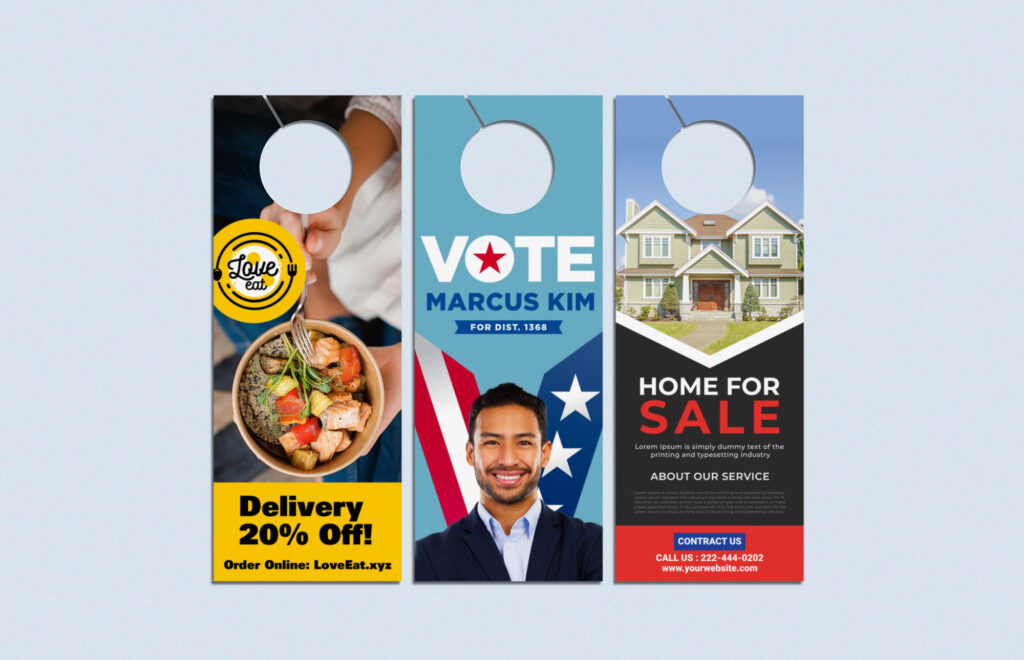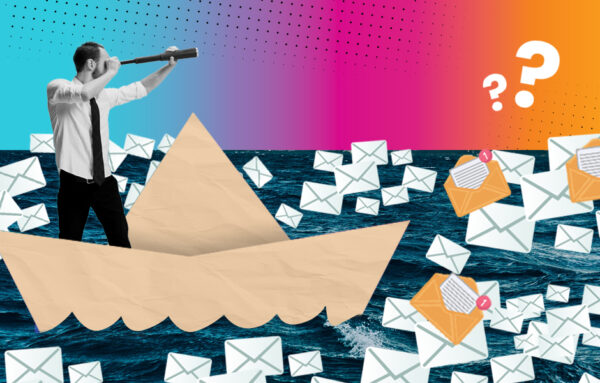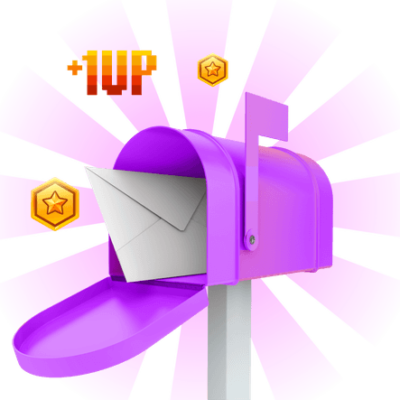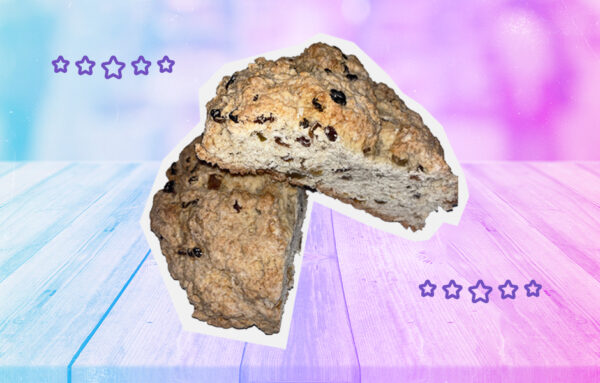
By The Printing for Less Team
It’s not news that, in this era dominated by digital marketing, it’s easy to overlook the power of strategies such as direct mail. One direct mail-adjacent piece—an often-underrated tactic that continues to yield impressive results for local businesses—is the simple door hanger.
Door hangers are full of untapped marketing potential. They are the perfect vehicle for marketing your business locally and are one of the most inexpensive ways to get the word out to a large group of potential customers. When strategically deployed, door hangers can be an effective tool for driving sales and increasing brand awareness in your community. Here’s how:
- Hyper-targeted Marketing: Door hangers allow you to directly target specific neighborhoods or areas where your ideal customers reside. By tailoring your message to suit the needs and preferences of local residents, you can increase the relevance of your marketing efforts and capture the attention of potential customers.
- High Visibility: Unlike digital ads that can easily be ignored or overlooked, door hangers are a physical element sure to be seen by homeowners as they enter or exit their homes. This high visibility increases the likelihood of your message being noticed and remembered, thereby enhancing brand recall and engagement.
- Cost-effective: Compared with other forms of advertising—such as television or radio commercials—door hangers offer a cost-effective solution for local businesses with limited marketing budgets. With minimal printing and distribution costs, door hangers provide an affordable means of reaching a targeted audience without breaking the bank.
- Personal Touch: In an age of impersonal digital communication, receiving a physical door hanger can make recipients feel valued and appreciated. And by incorporating personalized messages or special offers, you can establish a connection with potential customers and differentiate your business from competitors.
- Trackable Results: While perhaps not widely known, the effectiveness of door hanger campaigns can be easily measured using various tracking methods. By including unique promo or QR codes on your door hangers, you can accurately monitor the success of the campaign and determine its return on investment.
- Versatility: Door hangers are highly versatile marketing tools that can be customized to suit a variety of promotional objectives. Whether you’re promoting a grand opening, announcing a special sale, or offering exclusive discounts, door hangers provide a flexible platform for conveying your message in a unique and memorable way.
- Complement to Digital Marketing: While digital marketing plays a crucial role in today’s advertising landscape, integrating door hanger campaigns into your marketing mix can amplify your reach and reinforce your brand message. By leveraging both online and offline channels, you can create a cohesive marketing strategy that maximizes your impact and drives sales.
Door hangers, though simple, represent a valuable opportunity for local businesses to connect with a target audience on a personal level and drive tangible results. By harnessing the unique advantages of this tried-and-true marketing method, businesses can enhance their visibility, attract new customers, and ultimately boost sales in their local community. So, the next time you’re looking for an effective way to promote your business, don’t underestimate the power of the door hanger. It could be your key to success. Want to give them a try? Shop our door hangers.
Want to see how Printing for Less can help you with print & mail?










